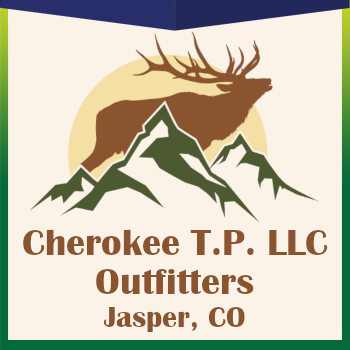Show Special:
New Mexico Slam & Plan Special
Pay a $750 hunt deposit and NM tag application fees and you're guaranteed a 2023 NM big game hunt.
NM Slam & Plan
Grand Slam Special
Secure your 2023 NM hunt with a $750 deposit. Apply and pay for the Big 6 NM Game tag applications: Bull Elk, Mule Deer, Oryx, Pronghorn Antelope, Barbary Sheep, and Ibex Goat. Total application fees for all 6 species is $5793. If you don't draw for any hunt, we'll provide you a landowner tag for a 2023 hunt - guaranteed. Your tag application fees will be refunded for all species that you don't draw for minus a $13 habitat stamp fee. If you do draw for one or more species, your guaranteed hunt will be provided in 2024. Please contact us with any questions.
Grand Slam Special
Secure your 2023 NM hunt with a $750 deposit. Apply and pay for the Big 6 NM Game tag applications: Bull Elk, Mule Deer, Oryx, Pronghorn Antelope, Barbary Sheep, and Ibex Goat. Total application fees for all 6 species is $5793. If you don't draw for any hunt, we'll provide you a landowner tag for a 2023 hunt - guaranteed. Your tag application fees will be refunded for all species that you don't draw for minus a $13 habitat stamp fee. If you do draw for one or more species, your guaranteed hunt will be provided in 2024. Please contact us with any questions.
Matt Bennett - (575)517-6083
Jerry Blake - (315)374-8209
FAIR CHASE NEW MEXICO ELK HUNTING IS OUR SPECIALTY…
If you’re looking for a serious guided New Mexico hunting adventure — the kind of hunting experience that brings majestic, bugling, trophy bulls in so close the hair will stand up on the back of your neck, then you’ll want to book with LOH Outfitters. With comfortable accommodations, great food, and a 90+ percent opportunity on 280” – 390” bulls, we’re hard to beat for blood-pumping action in the Gila wilderness and Southwestern New Mexico. If you’re looking for a great elk hunting experience give us a call.
We do this for the love of the hunt.
If you’d like to share this experience with us, please make sure you’re in it for the right reasons. We are a professional outfit, in one of the best areas of the world for trophy animals and high success, but we can’t always control mother nature or animal behaviors. If you’ll be unhappy going home without a kill, we’d suggest you consider a high fence hunt with a different operation. If you’ll have a positive outlook from the beginning to the end, then we believe you’ll be truly pleased with your hunt and our operation. Thank you from our family.
Our hunts feature 1-on-1 professional guides
We specialize in units 13, 15, 16, 17, and 36. Units 13, 15 and 17 are trophy units and can only be hunted with bow or muzzleloader. We also offer a demanding unit 16B* trip that is a horseback bow hunt 10 to 20 miles deep into the pristine Gila wilderness.
NEW MEXICO ELK HUNTS - WE SPECIALIZE IN ELK HUNTING FOR TROPHY BULLS…
If you’re looking for a serious New Mexico elk hunting adventure — the kind of hunting experience that brings majestic, bugling, trophy bulls in so close the hair will stand up on the back of your neck, then you’ll want to book with LOH Outfitters. With comfortable accommodations, good food, and a 90+ percent opportunity on 300” – 400” bulls, we’re hard to beat for blood-pumping action in the Gila wilderness and Southwestern New Mexico. Our elk hunts feature 1-on-1 professional guides in units 13, 15, 16, 17, and 36. Units 13, 15 and 17 are trophy units and can only be hunted with bow or muzzleloader. We also offer a demanding unit 16B* trip that is a horseback bow hunt 10 to 20 miles deep into the pristine Gila wilderness.
BARBARY SHEEP (AOUDAD) HUNTS
A Little About Barbary Sheep
In 1950 New Mexico introduced Barbary sheep (also known as Aoudad) into south eastern New Mexico. If you are not doing one of our elk hunts, Barbary sheep is a great hunting trip.
They quickly expanded their inhabitants to nearly the entire state of New Mexico. In 1955 (NMDGF) classified Barbary sheep as a game animal . In 1965 there was a large escape from the McKnight game preserve of 100+ animals and In 1967 New Mexico Department Game and Fish (NMDGF) did the first Hunt in the Hondo valley. Since Barbary Sheep hunting started in Hondo valley the success rate for quality trophy rams has gone up from 14% to 85%. Our Instagram page has some great pictures of past hunts.
Barbary sheep are truly an amazing animal, primarily living in rocky, cactus flats their diet consists of 90% cactus and yucca. This enables the sheep to go longer than other animals without visiting waterholes. This makes them very interesting to hunt and makes for a lot of time spent behind a good set of optics. These animals create a very special and unique hunt. Please feel free to contact us if you have any questions on how you can sign up for a hunt.
BIGHORN SHEEP HUNTS
Bighorn Sheep have inhabited the Rocky Mountains for hundreds of years. Nearly wiped out by unmanaged hunting in the early part of the last century, New Mexico bighorn are making a comeback. New Mexico has two distinct subspecies of bighorn sheep; Rocky Mountain Bighorn and Desert Bighorn.
Hunting New Mexico Bighorn is a rare opportunity and often described as a once-in-a-lifetime hunt. Successfully drawing a tag can feel like winning the lottery as once a ram tag is drawn you are no longer eligible to draw the tag again.
New Mexico Rocky Mountain bighorn sheep hunting primarily occurs in alpine elevations in the Pecos, Latir, and Wheeler Peak Wilderness. This area is 12,000 – 13,000 feet and access to this rugged terrain is often on horseback. Hunting is tough and unpredictable. Like any high elevation hunts, the weather can change quickly and only the most physically fit hunters can endure the low-oxygen conditions. The expansive wilderness is a true highlight to any backcountry hunt.
Lower elevation Rocky Mountain bighorn sheep hunts can be found in Turkey Creek, San Francisco River, Dry Cimarron and the Rio Grande Gorge. While this habitat is more accessible for vehicles the terrain comprises steep canyons, and tough rock formations to navigate.
Hunting for the Desert bighorn sheep, New Mexico’s second subspecies, takes place in southwestern and south-central New Mexico. The warm, dry terrain, and scarce water create an entirely different yet challenging hunt. The herd is known to be easily spooked. Vehicle access is easier than higher elevations however hunters can expect steep, rocky and beautiful slopes filled with cactus.
MULE DEER HUNTS
Mule deer are arguably one of the most sought after species of the west. Fortunately for you, New Mexico mule deer hunting benefits by the existence of two different sub species; the Rocky Mountain mule deer in the northern half of the state, and the desert mule deer in the southern half of the state.
A Brief History
Westward expansion in the early 1900s contributed to the decline in mule deer habit and migration routes resulting in a mule deer population with approximately 40,000 animals. However it was not until improved population management efforts applied by state and federal agencies was changed affected. Additionally, strong leadership support from organizations and volunteer programs like the Mule Deer Foundation (MDF), and the Rocky Mountain Elk Foundation (RMEF) has also made restoring habitat and predator control improvements possible. As a result, a growing and properly managed mule deer population helps make New Mexico a prime state for mule deer hunting.
New Mexico Mule Deer Hunting
Four distinct hunting seasons define New Mexico mule deer hunting. First, is the archery-only hunt in early September. This provides opportunities for harvesting mule deer still in velvet. Second is the late October muzzleloader season. Third is the early November start of rifle season. Finally, the last season includes an additional January archery rut hunt.
Hunters choosing LOH Outfitters as their hunting outfitters have the option to choose either a draw hunt or private ranch hunts. Either option can lead to a successful hunt and working with an outfitter can be much easier obtaining the type and location of hunt your are seeking. For instance, review our tutorial for getting started with a license and draw hunts and see just how easy we can make it for you.
ORYX HUNTS
A Oryx hunt can be an amazing experience. Also known as gemsbok, the oryx is a visually striking antelope with distinct markings and long, straight horns (30–40 inches) grown by both sexes. Standing approximately 46 inches at the shoulder and six feet in length, oryx often weigh near 500 pounds. You can check out more images on our Instagram page from previous oryx hunts.
The thick tan-colored hide covering the oryx is marked on the face with symmetrical black and white triangular patches and broad stripes from the horns over the eyes to a white muzzle. Farther down the muzzle, black stripes move down the neck and around the underbody, forming bands around all four legs. Also moving from the head along the spine is a black stripe consisting of a short black mane at the neck to the black tasseled tail.
Traditionally, Oryx are found in desert, steppe and savanna ecosystems of Africa and the Middle East at elevations between 3,500–4,800 feet. In New Mexico, the Chihuahuan Desert in White Sands Missile Range and the surrounding areas is remarkably similar to the arid, native habitats where oryx subsist with very little water.
Oryx primarily live in herds of 10–40 animals, comprised of one dominant male, a harem of females and a few non-dominant males. Many males remain solitary and defend a sole territory by marking it with dung deposits.
PRONGHORN ANTELOPE HUNTS
Across the wide open spaces of New Mexico roams an unlikely creature, the North American pronghorn antelope. Although the may look like an African species they are Native to North America. New Mexico’s antelope herd is well know for trophy antelope producing numerous goats every year that exceed the Boone and Crockett mark. Known for their speed and keen eye site make for an experience filled hunt.
While on your hunt be prepared to spend a lot of time glassing and covering country looking at 10-20 bucks a day. Antelope are a very territorial animal which makes using decoys very effective.
Be prepared to shoot out to 500 yards. If you prefer to hunt with a bow practice out to 80+ yards and from the sitting position.
In 1950 New Mexico introduced Barbary sheep (also known as Aoudad) into south eastern New Mexico. If you are not doing one of our elk hunts, Barbary sheep is a great hunting trip.
They quickly expanded their inhabitants to nearly the entire state of New Mexico. In 1955 (NMDGF) classified Barbary sheep as a game animal . In 1965 there was a large escape from the McKnight game preserve of 100+ animals and In 1967 New Mexico Department Game and Fish (NMDGF) did the first Hunt in the Hondo valley. Since Barbary Sheep hunting started in Hondo valley the success rate for quality trophy rams has gone up from 14% to 85%. Our Instagram page has some great pictures of past hunts.
Barbary sheep are truly an amazing animal, primarily living in rocky, cactus flats their diet consists of 90% cactus and yucca. This enables the sheep to go longer than other animals without visiting waterholes. This makes them very interesting to hunt and makes for a lot of time spent behind a good set of optics. These animals create a very special and unique hunt. Please feel free to contact us if you have any questions on how you can sign up for a hunt.
BIGHORN SHEEP HUNTS
Bighorn Sheep have inhabited the Rocky Mountains for hundreds of years. Nearly wiped out by unmanaged hunting in the early part of the last century, New Mexico bighorn are making a comeback. New Mexico has two distinct subspecies of bighorn sheep; Rocky Mountain Bighorn and Desert Bighorn.
Hunting New Mexico Bighorn is a rare opportunity and often described as a once-in-a-lifetime hunt. Successfully drawing a tag can feel like winning the lottery as once a ram tag is drawn you are no longer eligible to draw the tag again.
New Mexico Rocky Mountain bighorn sheep hunting primarily occurs in alpine elevations in the Pecos, Latir, and Wheeler Peak Wilderness. This area is 12,000 – 13,000 feet and access to this rugged terrain is often on horseback. Hunting is tough and unpredictable. Like any high elevation hunts, the weather can change quickly and only the most physically fit hunters can endure the low-oxygen conditions. The expansive wilderness is a true highlight to any backcountry hunt.
Lower elevation Rocky Mountain bighorn sheep hunts can be found in Turkey Creek, San Francisco River, Dry Cimarron and the Rio Grande Gorge. While this habitat is more accessible for vehicles the terrain comprises steep canyons, and tough rock formations to navigate.
Hunting for the Desert bighorn sheep, New Mexico’s second subspecies, takes place in southwestern and south-central New Mexico. The warm, dry terrain, and scarce water create an entirely different yet challenging hunt. The herd is known to be easily spooked. Vehicle access is easier than higher elevations however hunters can expect steep, rocky and beautiful slopes filled with cactus.
MULE DEER HUNTS
Mule deer are arguably one of the most sought after species of the west. Fortunately for you, New Mexico mule deer hunting benefits by the existence of two different sub species; the Rocky Mountain mule deer in the northern half of the state, and the desert mule deer in the southern half of the state.
A Brief History
Westward expansion in the early 1900s contributed to the decline in mule deer habit and migration routes resulting in a mule deer population with approximately 40,000 animals. However it was not until improved population management efforts applied by state and federal agencies was changed affected. Additionally, strong leadership support from organizations and volunteer programs like the Mule Deer Foundation (MDF), and the Rocky Mountain Elk Foundation (RMEF) has also made restoring habitat and predator control improvements possible. As a result, a growing and properly managed mule deer population helps make New Mexico a prime state for mule deer hunting.
New Mexico Mule Deer Hunting
Four distinct hunting seasons define New Mexico mule deer hunting. First, is the archery-only hunt in early September. This provides opportunities for harvesting mule deer still in velvet. Second is the late October muzzleloader season. Third is the early November start of rifle season. Finally, the last season includes an additional January archery rut hunt.
Hunters choosing LOH Outfitters as their hunting outfitters have the option to choose either a draw hunt or private ranch hunts. Either option can lead to a successful hunt and working with an outfitter can be much easier obtaining the type and location of hunt your are seeking. For instance, review our tutorial for getting started with a license and draw hunts and see just how easy we can make it for you.
ORYX HUNTS
A Oryx hunt can be an amazing experience. Also known as gemsbok, the oryx is a visually striking antelope with distinct markings and long, straight horns (30–40 inches) grown by both sexes. Standing approximately 46 inches at the shoulder and six feet in length, oryx often weigh near 500 pounds. You can check out more images on our Instagram page from previous oryx hunts.
The thick tan-colored hide covering the oryx is marked on the face with symmetrical black and white triangular patches and broad stripes from the horns over the eyes to a white muzzle. Farther down the muzzle, black stripes move down the neck and around the underbody, forming bands around all four legs. Also moving from the head along the spine is a black stripe consisting of a short black mane at the neck to the black tasseled tail.
Traditionally, Oryx are found in desert, steppe and savanna ecosystems of Africa and the Middle East at elevations between 3,500–4,800 feet. In New Mexico, the Chihuahuan Desert in White Sands Missile Range and the surrounding areas is remarkably similar to the arid, native habitats where oryx subsist with very little water.
Oryx primarily live in herds of 10–40 animals, comprised of one dominant male, a harem of females and a few non-dominant males. Many males remain solitary and defend a sole territory by marking it with dung deposits.
PRONGHORN ANTELOPE HUNTS
Across the wide open spaces of New Mexico roams an unlikely creature, the North American pronghorn antelope. Although the may look like an African species they are Native to North America. New Mexico’s antelope herd is well know for trophy antelope producing numerous goats every year that exceed the Boone and Crockett mark. Known for their speed and keen eye site make for an experience filled hunt.
While on your hunt be prepared to spend a lot of time glassing and covering country looking at 10-20 bucks a day. Antelope are a very territorial animal which makes using decoys very effective.
Be prepared to shoot out to 500 yards. If you prefer to hunt with a bow practice out to 80+ yards and from the sitting position.

















































